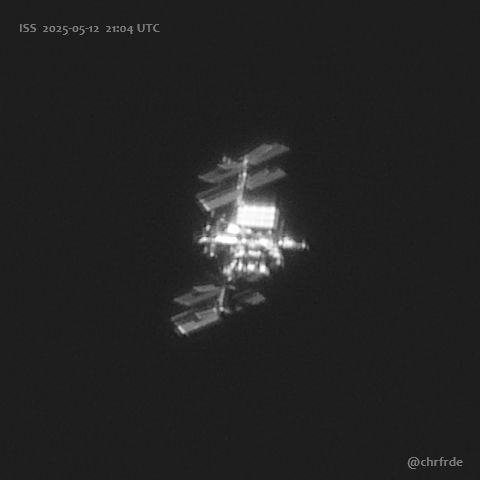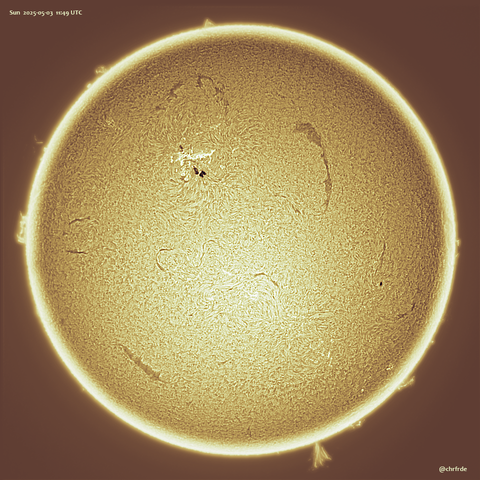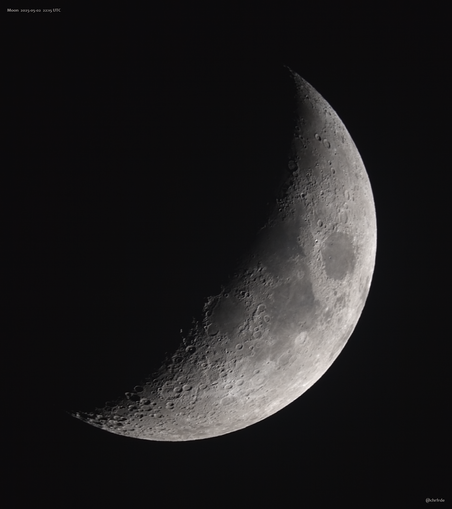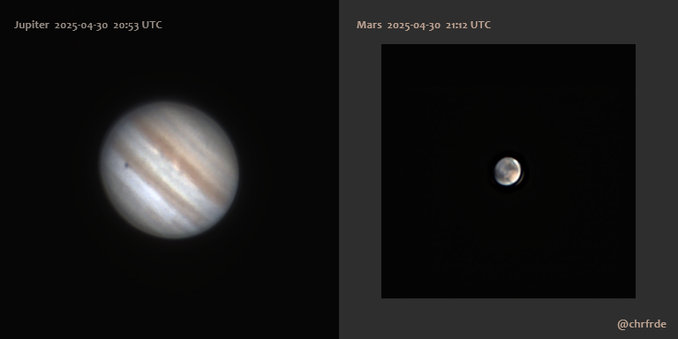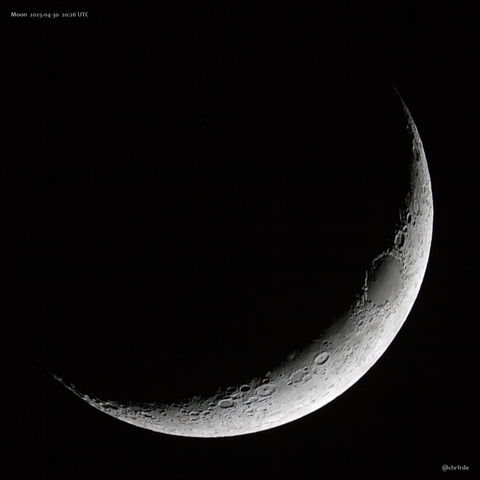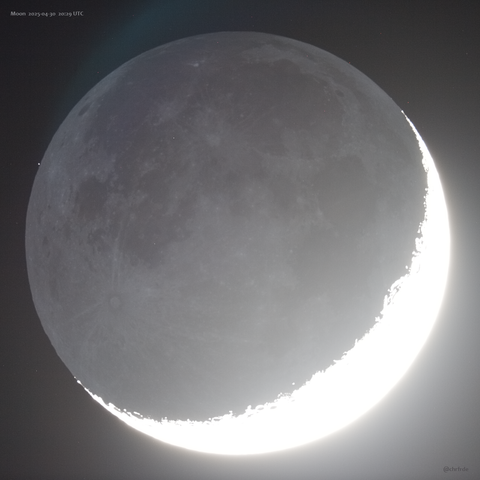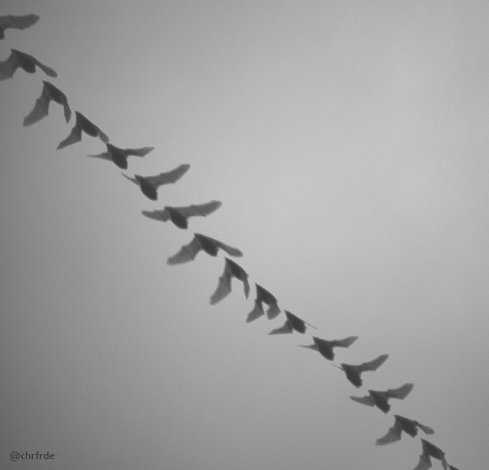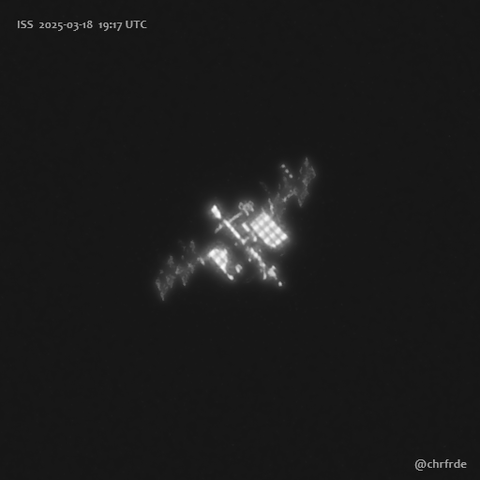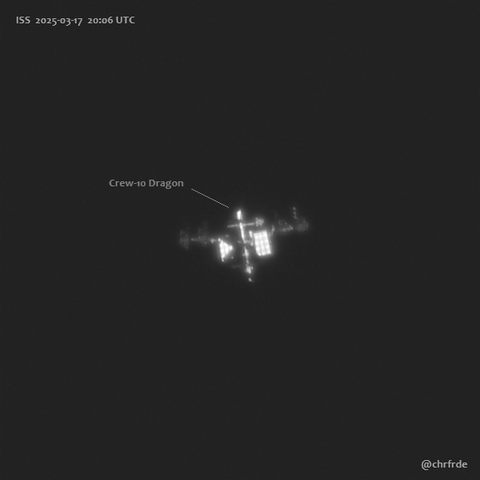Tonight's #ISS pass over The Hague. 12 x 0.15 ms unfiltered mono in Celestron 8" at f/10. #astrophotography
Amateur astronomer from urban 15th floor balcony, Celestron 8'' + Galileoscope. Software developer. Image processing / HALCON. Fledgling skeptic. He/him.
@sunumbral Some people do shoot simply with DSLR + telelens with pretty good results.
@sunumbral You need large binoculars and good eyes to see more a dot I think. I have a cheap pair of 10 x 50 I need to use with glasses to achieve focus and I didn't get enough visual quality out of it to unambigously see the shape.
@jesusmargar once you have a pass there are different techniques I record video aiming manually then after the pass you collect frames with hits. This is a stack of 30 images.
@jesusmargar iss shots you always have to plan but of course the orbit is well known you can check when you have passes on sites like https://www.heavens-above.com/
This evening's #ISS pass over The Hague. 31 x 0.25 ms unfiltered mono in Celestron 8" at f/10.
The classic genre of high-rise balcony fish photography. 1/250 sec EOS 400D in 300mm/f4.0 lens.
Evolution of sunspot group AR 4079 over the last 3 days. Each 500 x 0.15-0.17 ms OD 3.8 solar foil + longpass red in Celestron 8" at f/10. #astrophotography https://mastodon.social/@chrfrde/114446045689707882
Also here is today's #Sun in Ha. 1000 x 0.8 ms Ha < 0.7 Å in Lunt 40 at f/10. #astrophotography
I haven't done much white light solar imaging since got a dedicated solar Ha scope but in honor of AR 4079 here is a sunspot closeup on today's Sun. 500 x 0.15 ms OD 3.8 solar foil + longpass red in Celestron 8" at f/10.
@DavidBflower Huh looks just like the Moon over here
This evening's waxing crescent #Moon 32.5% illuminated. Single shot 1/30 sec EOS 400D in Celestron 8" + 0.63x reducer. #astrophotography
This evening's #Jupiter with Europa shadow transit and #Mars to scale now at 6.6 arcsec apparent diameter. Respectively 1000 x 15 ms and 2000 x 10 ms RGB in Celestron 8" + 0.63 reducer + ADC. #astrophotography
This evening's waxing crescent #Moon 13% illuminated with and without Earthshine. 30 ms / 4 sec EOS 400D in Celestron 8" + 0.63x reducer. #astrophotography
Time lapse of #Sun from last weekend covering 3 hours of real time. 128 x 2000 x 0.9 ms Ha < 0.7 Å in Lunt 40 at f/10.
There are a few bats living here that come out at dusk and flutter about near my balcony. Very tricky to shoot since it is getting dark quickly and they move fast. I essentially reverted to ISS techniques running video hoping for one to fly through at a distance not too different from random focus.
Quick shot of #Jupiter this evening prior to the ISS pass with three nearby moons. 1000 x 12 ms Ha unfiltered mono in Celestron 8".
Comparison with a capture taken 10 seconds earlier
This evening's #ISS pass over The Hague. Crew-10 Dragon is still present since astronauts are currently returning in Crew-9. It think the view today provides just enough resolution to reveal the tapering nose cone. 29 x 0.1 ms unfiltered mono in Celestron 8" at f/10. #astrophotography

